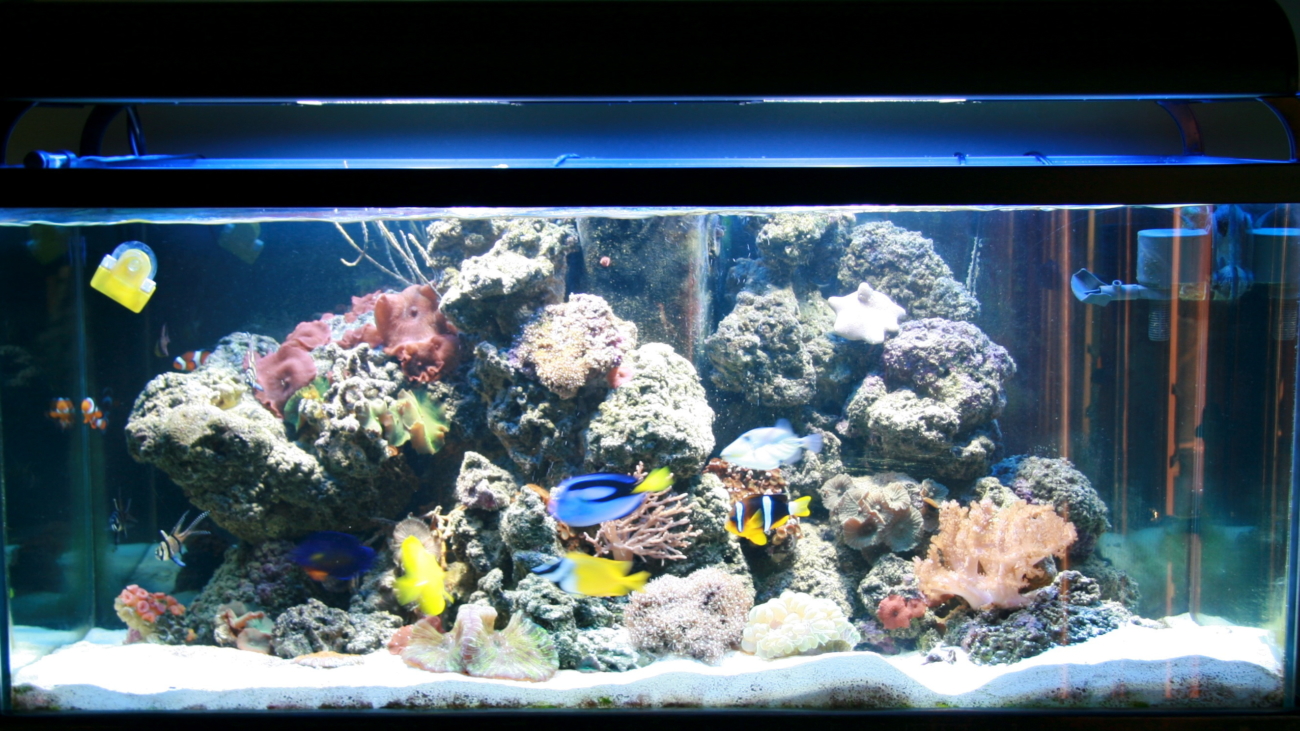Every now and again I try to sneak in a non work-related blog post for our website and social media pages. Since my family and I just moved into a new house, I thought I would discuss the proper ways to set up a saltwater aquarium. I just did this last week with both my reef tank (which I was able to break down and set up again in a single day) and my large fish-only system (which I detail below).
I took apart and drained my large saltwater fish-only system about a week before we moved. The tank is close to 200 gallons, and I was fortunate to be able to take the fish to a local fish store for safe keeping during the move and subsequent set up process. Upon moving into our new home, I went to work getting it set up again.
Once you have the tank and stand in place, the first step is to aquascape the aquarium with your sand, live rock, and dead coral. You want to ensure the fish have enough hiding places (caves, overhangs, etc) to feel secure, but also enough open swimming space to eat, swim, and be seen by you (why have a fish tank if you can’t watch the fish?). You also need to make sure the rock and dead coral are securely mounted, so that you don’t have rock slides. At this point I like to position all the equipment (filters, skimmers, heaters, powerheads and pumps, etc) that will be used to run the system.
Once the tank is aquascaped and the equipment is in place you can fill it with freshwater, ideally from a garden hose. That’s a lot faster than using buckets or pitchers. When the tank is filled you can add enough salt mix to bring the salinity to your desired level (I recommend a specific gravity of 1.020 – 1.023 for fish only, and 1.024 – 1.025 for an aquarium housing corals and invertebrates) and turn on your equipment. You’ll want to make sure you have your salinity and temperature where you want them prior to adding any fish (a good temperature range for most saltwater fish tanks is 77-80 degrees).
At this point you will have a tank full of sand, rock, and water but not fish. Your temperature and salinity will be at ideal levels, but you’re probably not ready to add fish just yet. How long your tank remains empty will depend upon what stage your water is in with respect to the nitrogen cycle. Without boring you with too much science, you will typically see a spike in ammonia (which is lethal to fish and corals) within a few days of setting up the tank. That toxic ammonia will be converted to somewhat less toxic nitrite, and eventually to relatively harmless nitrate. The process can take anywhere from 7 to 50 days, and can be sped up with the use of bacterial additives or by seeding the new aquarium with a little sand or live rock from a healthy existing system.
The only way to know where your levels are is to test your water frequently with a good test kit. Once you see zero ammonia and nitrite, and the resulting spike in nitrate, you’ll be ready to do a large water change (to reduce the nitrate) and begin stocking your aquarium with fish. Best to stock slowly and start with a few hardy fish (such as damsels or cardinals). When they are settled and doing well, you can slowly add more fish and eventually invertebrates like corals and shrimp.
It’s difficult to wait to stock your new aquarium, but patience and attentiveness really are the keys to success. If you have any saltwater fish tank questions, please let me know. I’m offering free aquarium advice with any new SEM or SEO campaign!

